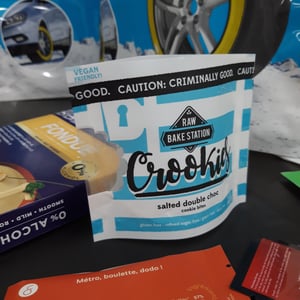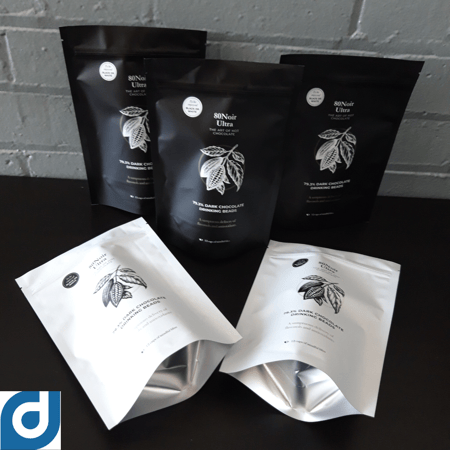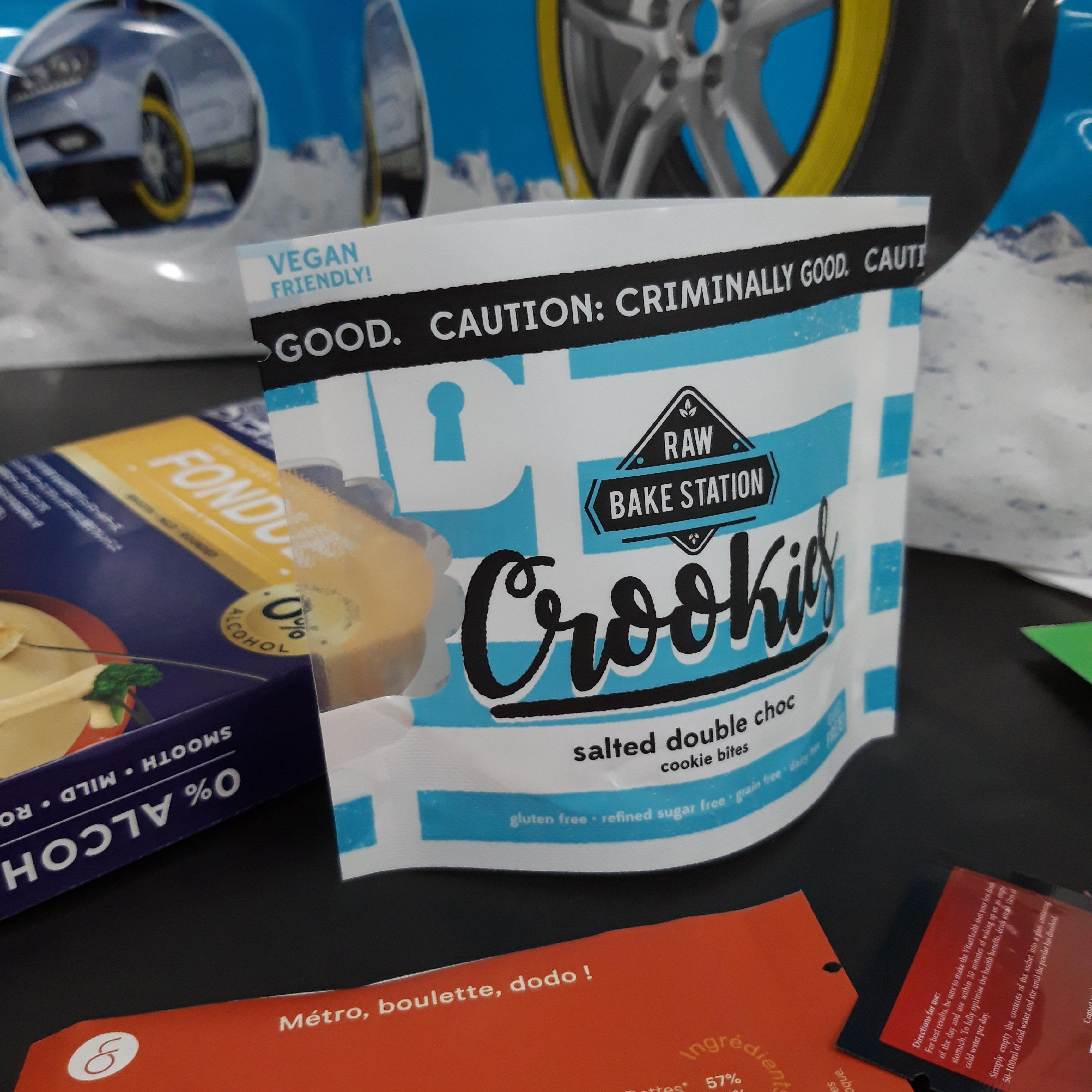A guide to Stand Up Pouches for food and product flexible packaging
An increasingly popular choice for printed food and non food packaging is the stand up pouch. They are in almost every retail aisle, and also increasingly popular for mail order products too. The stand up pouch comes in many shapes and sizes as well as a huge range of material structures. So you need to consider a few things when you’re deciding on your packaging. Here you will find answers to some of the most frequently asked questions we receive.
 Why use Pouches for Food and Product Packaging
Why use Pouches for Food and Product Packaging
Pouches in all formats are functional alternatives to plastic containers and glass bottles or jars. Pouches are easy to transport, maximise shelf space at retail and add further convenience and choice for the consume. Many will use bespoke flexible packaging barrier materials to protect the goods as well as maintain the shelf life of the products. They're also versatile and can be supplied with customized shapes, handles, easy open options as well as different closure systems. Overall pouches are a cost effective way to sell goods whilst adding convenience and utilising print technologies to maximise brand impact and product messaging.
Stand Up Pouch Sizes
Contrary to popular belief, there are no industry standard sizes of pouch. 1KG of powder will fill a different space to 1KG of nuts, for example. Therefore sizing your printed stand up pouch is important – and beneficial. A good starting point is to ask for samples to determine your optimum pack size, considering product presentation, design and shelf space. Whilst we have a wide range of tooling options to create the perfect size pouch, we also help by sending samples of various sizes or produce an unprinted or even a printed mockup. Allowing you to see the product before committing to a full industrial production.
Types of Pouch Closure systems
Different closures offer different benefits for consumers. There are three main closure types in the market for Stand up Pouches. The standard press to close zipper is the most popular, due to cost and its airtightness. The innovative Velcro suite of closures is another option, which increases ease of use as you don’t need to marry up two separate tracks – like with the standard zipper – the hook-to-hook technology from Velcro enables multiple reseal points. Top sliders are popular in the pet food market and frozen foods and tend to be used for larger pouches.
Product Protection and Barrier
If shelf life is a consideration, or if the stand up pouch is subject to any processes during the filling of the product, we need to consider which barrier materials would be required. Specialist processes, such as retort or pasteurization, require specific materials, inks and lamination. Some products are gas flushed and vacuumed, and so require gas barrier materials. For extending shelf life, there are both metallic and non metallic flexible packaging materials that can aid your product too. Contact us to discuss materials optimization for your product protection and your budget. As well as high quality flexographic and gravure printing, we also provide short run digital print options for these products.
Bottom Seal Options
Why do some flexible packaging stand up pouches look amazing on shelf, and others look a little untidy? One area is the bottom seal. The two most common options are ‘doy’ (hence doypack often used to describe a stand up pouch) and ‘K-Seal’. The doy seal is a semi-circular seal as seen in the image, which is suited to lighter and larger, less dense products. These packs stand well as the seals can withstand the weight in pack. When the product being filled is too heavy, these seals can collapse and although the pouch still stands, they don’t stand tall and straight. The K-Seal is more suited to heavier and more dense products – powders and coffee come to mind. These only have two diagonal seals – and nothing on the bottom - on each bottom edge of pack, which creates a block bottom to be filled. The product fills this area tightly, which becomes its base to stand up on.
Easy Open and Convenience Features for pouches
Tear notches are a standard offering on stand up pouches. They give the consumer a specific point to intuitively open the pack by tearing. The tear notch often suffices on its own but sometimes a tear does not always follow the direction intended. To cater for a perfectly straight tear, we can include a laser score across the top of the pouch, from tear notch to tear notch. This enables a fuss-free opening which the consumer would expect from a stand up pouch. Its also possible to introduce cross directional laser scoring, allowing shaped opening points. Additional features can also be added, including a range of handle options and Euro Slots.
-1.jpg?width=300&name=DSCN1969%20(2)-1.jpg)
Spout Pouches and Shaped Pouches
Spout pouches ( 3 side seal and Stand up Pouch ) are functional alternative solutions to rigid plastic containers or glass bottles. Spout pouches are pouches supplied with a pre-determined size of spout pre fitted providing flexible packaging options for liquids, foods and powders. Typically they are used to pack wet products such as juices, energy drinks, alcoholic drinks, yoghurt and sauces and dry products such as spices and sugars for example. Spouts can be fitted across the top of the pouch, or at angle of 45 and 90 degrees. Its also possible to create shaped pouches making them unique to competitor products. If you would like to know more about shapes and spouts please call our team who can help you.
These points should help you understand some of the lesser known options on stand up pouches. If you’re interesting in learning even more about printed stand up pouches and flexible packaging, then please contact us - we’d be delighted to help!



